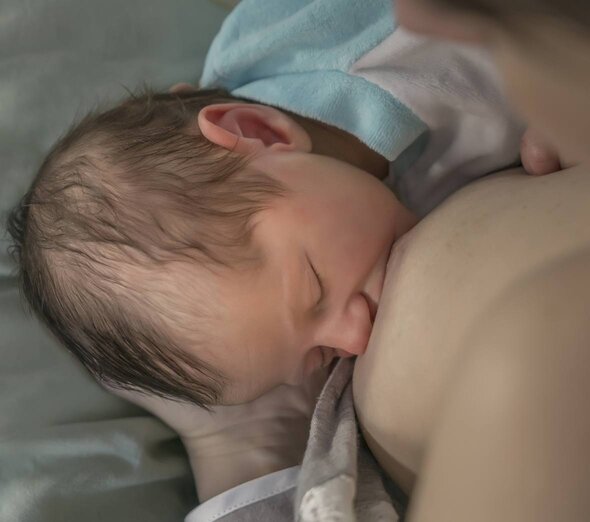

During pregnancy your breasts have already produced milk called colostrum, but only after the birth your body has launched the so-called "control of lactation."
After delivery each woman undergoes a so-called hormonal storm. This is when your body starts to adapt to its new role. The breasts begin rapid production of milk to meet the needs of your baby. It takes some time before your body adjusts the amount of produced milk to your baby's appetite, that is why it is so important to latch on as soon as possible after birth.
Breast fullness occurs 3-4 days after vaginal delivery 5-6 days after the Cesarean section.
Mastitis is a consequence of abnormal reaction at the breast fullness. If you do not take proper care of your breasts by emptying them regularly using a breast pump or feeding the baby, then 2-3 weeks after birth you will certainly feel the effects of milk stasis.
Typical symptoms of mastitis include fever (even up to 40°C), redness in the inflamed area, tense and shiny breast skin, muscle pain and chills. As the breast is swollen and reddened, touching it will be painful, and your baby will suckle it a lot less than usual. In extreme cases no milk will flow out of the inflamed breast.
During the breast fullness the baby suckles correctly. The nipples are hard and their areolae look as if spilled. However, sometimes the child may have difficulty with latching on if the nipples are too hard. The breast are engorged, heavy and full. You can therefore feel discomfort and even pain, but usually the whole full breast is painful, whereas during mastitis, the pain is restricted to a single area. Breast fullness may also be accompanied by fever that drops after emptying the breast, but the skin is not tense.
During breast fullness the breast should be regularly emptied, thus doctors insist on quick latching the baby on. If for some reason you can not breastfeed you should express milk using a breast pump preventing dangerous milk stasis. It is very important not to express milk completely, as this way you will only stimulate lactation. Just 10-15 ml is enough to feel relief and reduce breast tension.
Before feeding, try to express some milk using a breast pump and slightly squeezing the breast. Then the nipple will not be so tense, and the milk will not flow out too copiously. If the interval between feeding sessions is too long, before attaching the baby try to warm it slightly with a warm compress, and then massage with gentle, circular movements and down towards the nipple, because this is where the milk ducts are located.
After feeding I recommend cold compresses or, known for many generations, chilled and crushed cabbage leaves. This treatment should last for up to 30 minutes. During the breast fullness wear soft, pressure free bra and be careful not to injure the breast.
Mastitis is usually caused by streptococci or staphylococci. It is treated with antibiotics. In the case of mastitis it is necessary to consult your doctor to choose the best treatment that is safe for your child.
Useful advice: If you suffer from breast fullness, do not limit the number of feeding sessions by supplementing your baby with additional drinks or infant formulas.